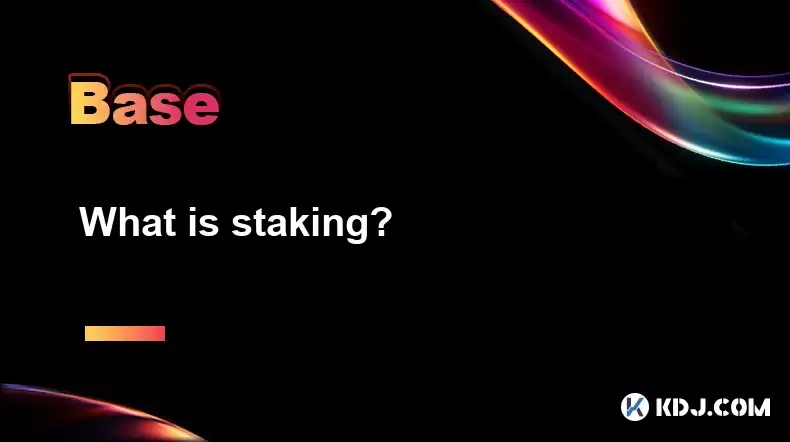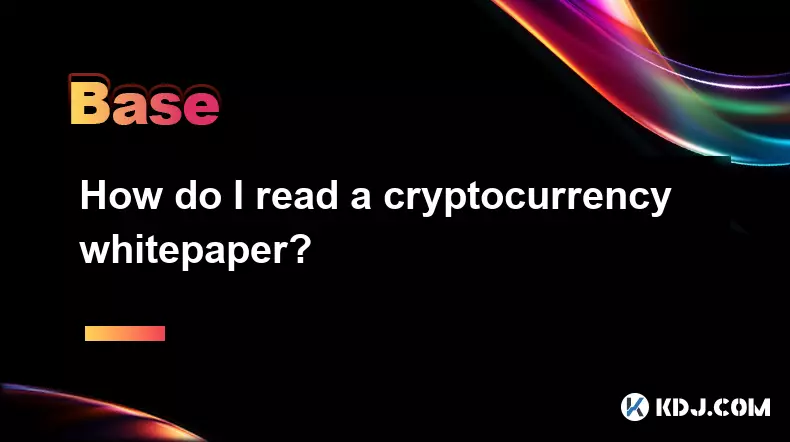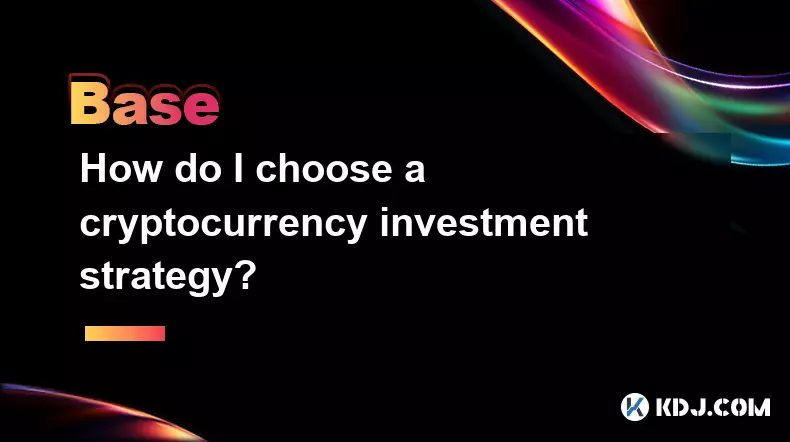-
 bitcoin
bitcoin $124586.364639 USD
0.62% -
 ethereum
ethereum $4670.671710 USD
3.33% -
 xrp
xrp $2.983701 USD
0.18% -
 tether
tether $1.000175 USD
-0.03% -
 bnb
bnb $1209.430642 USD
2.76% -
 solana
solana $231.365861 USD
0.51% -
 usd-coin
usd-coin $0.999665 USD
-0.02% -
 dogecoin
dogecoin $0.264657 USD
4.46% -
 tron
tron $0.346415 USD
1.60% -
 cardano
cardano $0.871586 USD
3.70% -
 chainlink
chainlink $23.451270 USD
7.56% -
 hyperliquid
hyperliquid $46.860071 USD
-2.96% -
 ethena-usde
ethena-usde $1.000120 USD
0.04% -
 sui
sui $3.611279 USD
1.08% -
 stellar
stellar $0.407149 USD
0.96%
What is staking?
Staking, a consensus mechanism in blockchains, involves validators securing the network and creating blocks based on their staked coins, earning passive income, ensuring security, and empowering governance participation.
Feb 18, 2025 at 02:54 pm

What Is Staking?
- Definition of Staking
- Proof of Stake Consensus Mechanism
- Benefits of Staking
- Risks of Staking
- How to Choose a Staking Pool
- How to Stake Assets
- Top Staking Platforms
- Different Types of Staking
- Staking Rewards
Proof of Stake Consensus Mechanism
Staking is a consensus mechanism used by blockchains to validate transactions and create new blocks. In this mechanism, validators are chosen based on the number of coins they hold (stake) in the network. A validator is responsible for adding new blocks to the blockchain. The more coins a validator stakes, the more likely they are to be chosen to add new blocks and earn rewards.
Benefits of Staking
- Passive Income: Stakers can earn rewards for holding their coins in a staking pool. These rewards are paid out in the form of new coins.
- Security: Staking helps to secure the blockchain network by encouraging validators to behave honestly. If a validator tries to cheat or act maliciously, they will lose their stake.
- Governance: Stakers can participate in the governance of the blockchain network by voting on proposals to change the network's parameters.
Types of Staking
- Solo Staking: Solo staking involves running a full node on a blockchain network and staking coins independently. It requires a significant investment in hardware and technical expertise.
- Pool Staking: Pool staking involves delegating coins to a staking pool that is operated by a third party. The pool operator handles the technical aspects of staking, and stakers receive a portion of the rewards earned by the pool.
Staking Rewards
The rewards for staking vary depending on the blockchain network and the number of coins staked. Some networks offer a fixed reward rate, while others offer a variable rate that depends on network activity.
How to Choose a Staking Pool
When choosing a staking pool, it is important to consider the following factors:
- Pool Size: The size of the pool is a factor in determining how likely you are to earn rewards. A larger pool has a higher chance of being chosen to create new blocks, but it may also have a higher number of validators, which could dilute your rewards.
- Pool Fees: Some staking pools charge a fee for their services. These fees are typically a percentage of the rewards earned.
- Pool Operator: The pool operator is responsible for managing the pool and ensuring that it is operated in a secure and efficient manner. It is important to choose a pool operator that has a good reputation and a proven track record.
How to Stake Assets
The process of staking assets varies depending on the blockchain network and the staking platform. In general, you will need to:
- Create a wallet on the blockchain network.
- Choose a staking platform and create a staking pool account (if applicable).
- Transfer the coins you want to stake to your staking pool account.
- Start staking your coins.
FAQs
What is the difference between staking and mining?Staking is a consensus mechanism that involves holding coins in a wallet and earning rewards for participating in the network's security. Mining, on the other hand, involves using specialized hardware to solve complex mathematical problems in order to validate transactions and earn rewards. Staking does not involve the use of hardware and is a more energy-efficient way to participate in the blockchain ecosystem.
What are the risks of staking?The main risks of staking are:
- Loss of staked coins: If the blockchain network is compromised, your staked coins could be lost or stolen.
- Dilution of rewards: If the number of validators in a staking pool increases, the rewards earned by each validator will be diluted.
- Smart contract risk: If you stake coins through a smart contract, you could lose your coins if the smart contract is compromised.
The time it takes to earn rewards from staking varies depending on the blockchain network and the number of coins staked. On average, staking rewards are paid out weekly or monthly.
Disclaimer:info@kdj.com
The information provided is not trading advice. kdj.com does not assume any responsibility for any investments made based on the information provided in this article. Cryptocurrencies are highly volatile and it is highly recommended that you invest with caution after thorough research!
If you believe that the content used on this website infringes your copyright, please contact us immediately (info@kdj.com) and we will delete it promptly.
- BlockDAG, DOGE, HYPE Sponsorship: Crypto Trends Shaping 2025
- 2025-10-01 00:25:13
- Deutsche Börse and Circle: A StableCoin Adoption Powerhouse in Europe
- 2025-10-01 00:25:13
- BlockDAG's Presale Buzz: Is It the Crypto to Watch in October 2025?
- 2025-10-01 00:30:13
- Bitcoin, Crypto, and IQ: When Genius Meets Digital Gold?
- 2025-10-01 00:30:13
- Stablecoins, American Innovation, and Wallet Tokens: The Next Frontier
- 2025-10-01 00:35:12
- NBU, Coins, and Crypto in Ukraine: A New Yorker's Take
- 2025-10-01 00:45:14
Related knowledge

How does cryptocurrency achieve decentralization?
Sep 30,2025 at 04:37am
Understanding the Foundation of Decentralization in Cryptocurrency1. Cryptocurrency achieves decentralization primarily through the use of blockchain ...

What are some common methods of cryptocurrency market manipulation?
Sep 27,2025 at 02:55am
Wash Trading and Its Impact on Market Perception1. Wash trading involves an individual or entity simultaneously buying and selling the same cryptocurr...

How do I read a cryptocurrency whitepaper?
Sep 27,2025 at 05:54am
Understanding the Structure of a Cryptocurrency Whitepaper1. Begin by identifying the executive summary, which outlines the project’s core vision and ...

Can I recover lost cryptocurrency?
Sep 25,2025 at 08:18am
Understanding the Nature of Cryptocurrency Loss1. Cryptocurrency operates on decentralized networks, meaning there is no central authority to reverse ...

How do I choose a cryptocurrency investment strategy?
Sep 27,2025 at 03:55pm
Understanding Risk Tolerance in Crypto Investing1. Assessing personal risk tolerance is a foundational step when entering the cryptocurrency market. V...

How can I earn passive income from cryptocurrency?
Sep 23,2025 at 10:18am
Staking Cryptocurrencies for Regular Returns1. Many blockchain networks operate on a proof-of-stake (PoS) consensus mechanism, allowing users to earn ...

How does cryptocurrency achieve decentralization?
Sep 30,2025 at 04:37am
Understanding the Foundation of Decentralization in Cryptocurrency1. Cryptocurrency achieves decentralization primarily through the use of blockchain ...

What are some common methods of cryptocurrency market manipulation?
Sep 27,2025 at 02:55am
Wash Trading and Its Impact on Market Perception1. Wash trading involves an individual or entity simultaneously buying and selling the same cryptocurr...

How do I read a cryptocurrency whitepaper?
Sep 27,2025 at 05:54am
Understanding the Structure of a Cryptocurrency Whitepaper1. Begin by identifying the executive summary, which outlines the project’s core vision and ...

Can I recover lost cryptocurrency?
Sep 25,2025 at 08:18am
Understanding the Nature of Cryptocurrency Loss1. Cryptocurrency operates on decentralized networks, meaning there is no central authority to reverse ...

How do I choose a cryptocurrency investment strategy?
Sep 27,2025 at 03:55pm
Understanding Risk Tolerance in Crypto Investing1. Assessing personal risk tolerance is a foundational step when entering the cryptocurrency market. V...

How can I earn passive income from cryptocurrency?
Sep 23,2025 at 10:18am
Staking Cryptocurrencies for Regular Returns1. Many blockchain networks operate on a proof-of-stake (PoS) consensus mechanism, allowing users to earn ...
See all articles










































































